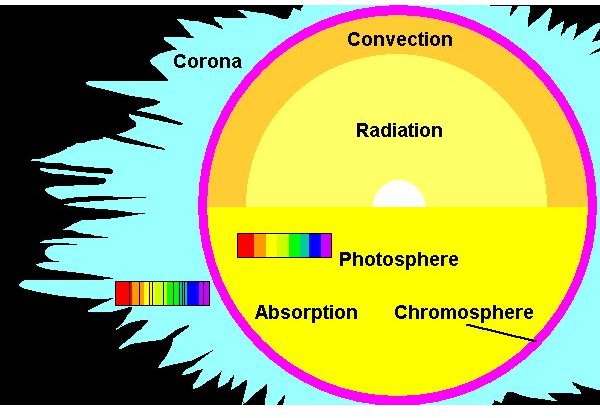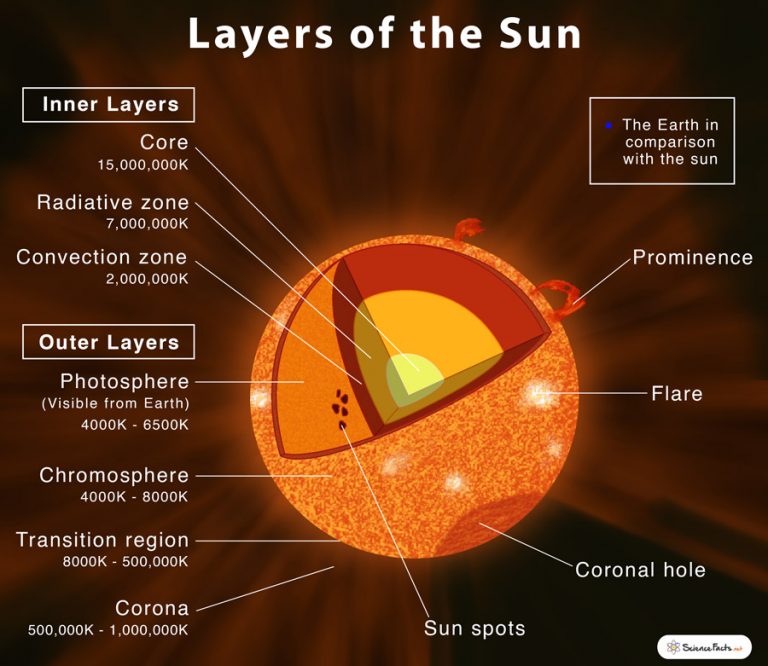

As the gases cool, they become the solar wind. Temperatures in the sun’s corona (opens in new tab) can get as high as 3.5 million degrees F (2 million degrees C. It appears as white streamers or plumes of ionized gas that flow outward into space. Like the chromosphere, the sun’s corona can only be seen during a total solar eclipse (or with NASA’s Solar Dynamics Observatory (opens in new tab)). The third layer of the sun’s atmosphere is the corona. Solar flares produce bursts of X-rays (opens in new tab), ultraviolet radiation (opens in new tab), electromagnetic radiation (opens in new tab) and radio waves (opens in new tab). The photosphere is also the source of solar flares: tongues of fire that extend hundreds of thousands of miles above the sun’s surface. The sun’s equatorial regions rotate in about 24 days, while the polar regions take more than 30 days to make a complete rotation. Since the sun is a ball of gas with no solid form, different regions rotate at different rates. Observing this motion led astronomers to realize that the sun rotates on its axis. Sunspots appear to move across the sun’s disk.

The photosphere is marked by bright, bubbling granules of plasma and darker, cooler sunspots, which emerge when the sun’s magnetic field breaks through the surface. The sun’s photosphere is about 300 miles (500 kilometers) thick, which is relatively thin when compared with the 435,000 miles (700,000 km) radius of the sun.

The photosphere is significantly cooler than temperatures at the sun’s core, which can reach about 27 million F (15 million C) according to NASA (opens in new tab). The temperature of the photosphere ranges from 11,000 degrees Fahrenheit (6,125 degrees Celsius) at the bottom to 7,460 F (4,125 C) at the top. It takes about eight minutes for sunlight from the photosphere to reach Earth. The term photosphere means “sphere of light” and is the layer where most of the sun’s energy is emitted. The photosphere is the lowest layer of the sun’s atmosphere - the innermost layer we can observe directly. The sun’s photosphere is the innermost layer of the sun that we can observe directly.


 0 kommentar(er)
0 kommentar(er)
